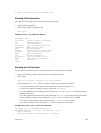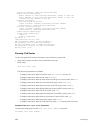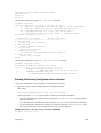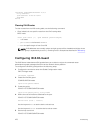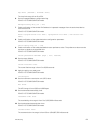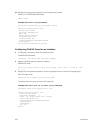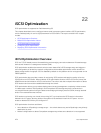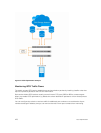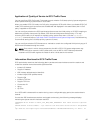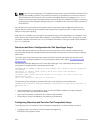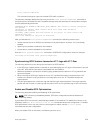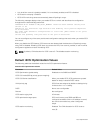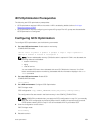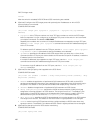• Automatic configuration of switch ports after detection of storage arrays.
• If you configure flow-control, iSCSI uses the current configuration. If you do not configure flow-
control, iSCSI auto-configures flow control settings so that receive-only is enabled and transmit-only
is disabled. .
• iSCSI monitoring sessions — the switch monitors and tracks active iSCSI sessions in connections on
the switch, including port information and iSCSI session information.
• iSCSI QoS — A user-configured iSCSI class of service (CoS) profile is applied to all iSCSI traffic.
Classifier rules are used to direct the iSCSI data traffic to queues that can be given preferential QoS
treatment over other data passing through the switch. Preferential treatment helps to avoid session
interruptions during times of congestion that would otherwise cause dropped iSCSI packets.
• iSCSI DCBx TLVs are supported.
The following illustration shows iSCSI optimization between servers and a storage array in which a stack
of three switches connect installed servers (iSCSI initiators) to a storage array (iSCSI targets) in a SAN
network. iSCSI optimization running on the master switch is configured to use dot1p priority-queue
assignments to ensure that iSCSI traffic in these sessions receives priority treatment when forwarded on
stacked switch hardware.
iSCSI Optimization
475



